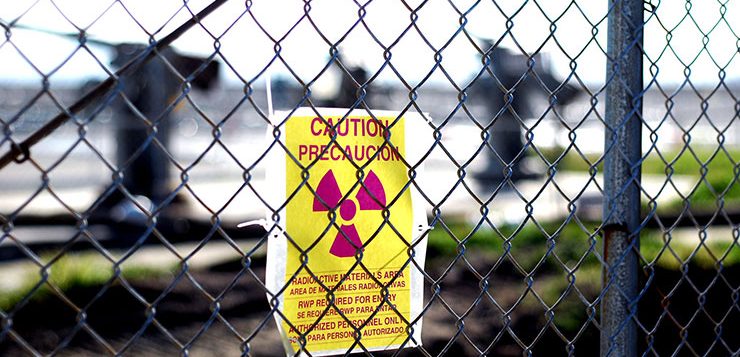When it comes to radioactive waste, First Nations Australians have a right to determine ‘what comes onto their country, and the circumstances under which it comes’. But that determination should not be made in the absence of scientific fact, and a climate of fear stoked by organisations with other agendas. Geoff Russell weighs in on the nuclear waste debate that is dividing South Australia.
The site recently chosen by the Federal Government for a radioactive waste dump is near Kimba on the Eyre Peninsula, roughly halfway between Sydney and Perth. Whether you call it a ‘dump’ or a ‘facility’ seems to be a litmus test of your views. If labels influence your opinions, then you aren’t paying enough attention.
While 61 percent of surveyed local residents near the site support the dump/facility, the Barngarla, an Aboriginal group with native title over a large part of the Eyre Peninsula, oppose it.
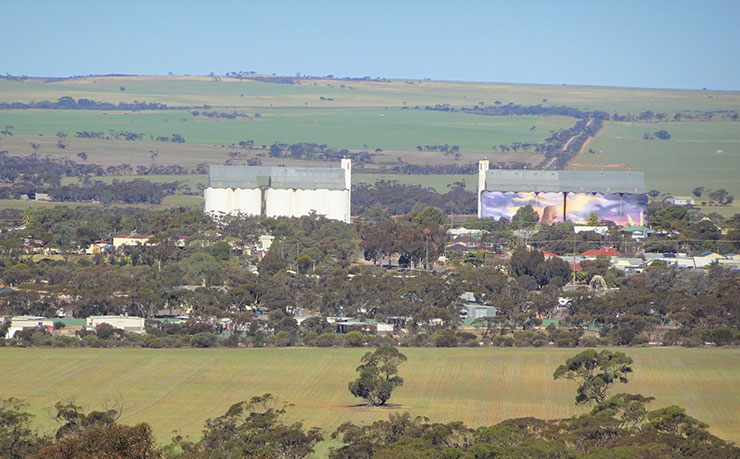
Technically, the debate is over and the decision is final. But I still think the Barngarla deserve a proper answer to their concerns and they certainly don’t feel that they’ve had it.
Why do the Barngarla oppose the facility/dump? They weren’t part of the official vote, but had their own vote; as reported in various places, including New Matilda.
Part of the problem with votes is that they don’t tell you why people do or don’t want something.
Given the jobs and money associated with this facility, plenty of people will want it for those reasons; just like people want piggeries and coal mines. The amount of money on offer will certainly impact the vote but is irrelevant to whether the project is worthy of any kind of worry or fear.
But again, why do the Barngarla oppose it? It’s an important thing to know.
Remember how Liberal Senator Jim Molan was pilloried just a few weeks back for confessing on ABC’s Q&A program that his opinion on climate change wasn’t evidence based; meaning he was allowing non-scientific opinions to influence his views. Are the Barngarla similarly influenced by non-scientific opinions?
It’s also an important thing to know.
The background
On the 5th of July 2018, Kimba hosted a hearing for the Federal Parliament’s Economic References Committee’s inquiry into the radioactive waste facility site selection process. Among the 27 witnesses appearing before the committee were four directors of the Barngarla Determination Aboriginal Corporation (BDAC) as well as their two solicitors. The hearings provided direct statements about why some Barngarla object to the facility.
Ms Dare, BDAC Director: “We’re not going to let it come on and destroy our country after we’ve fought for 20 years to get our country, to be recognised as the native title holders.”
Ms Miller, BDAC Director: “I’ve only heard about things in the media and stuff like that. I’ve heard that Woomera had a leakage from a plant that they had up there for 30 years. It’s going to cost them a lot of money to fix that.”
These are ordinary human fears, exactly the same fears that many non-indigenous Australians might have about this facility; including some or all of the 39 percent of residents who opposed it.
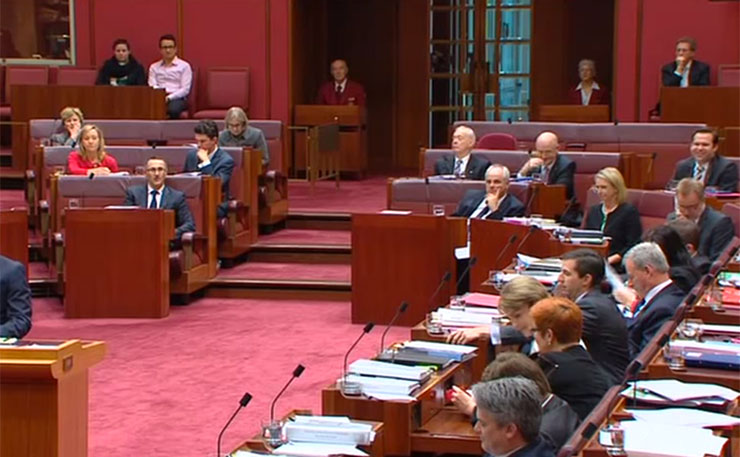
Everything I read on this issue from the parliamentary process is depressingly typical of the arid factual desert in which radiation issues are discussed.
In relation to the concern about the leaks at Woomera discovered in 2016, Labor Senator Alex Gallacher uttered the immortal words: “… trust me”. Did he really expect that to work?
Centre Alliance Senator Rex Patrick asked if any of the Barngarla had been to ANSTO (in Sydney); presumably because that was the appropriate place to get actual information about real fears. It seemed none of the Barngarla in the room had been, but the department had assured the Senator that some Traditional Owners (presumably from the area) had been to ANSTO. Nobody at the hearing seemed to know who.
There was also plenty of ‘he-said she-said’ about who had or hadn’t consulted with whom and who should have. This was as depressing as the process mumbo jumbo.
The issues
The best way to understand strange and unusually complex issues like radioactivity and it’s possible impacts is to compare and contrast it with something more familiar.
The following image shows land degraded by salt. When you cut down trees, the water table can rise and depending on the geology, the rising water will bring salt, and things die. The death of the plants ripples through the ecosystem impacting all manner of animals. This picture is part of a million hectares badly damaged by salt, with another 4 million at risk.
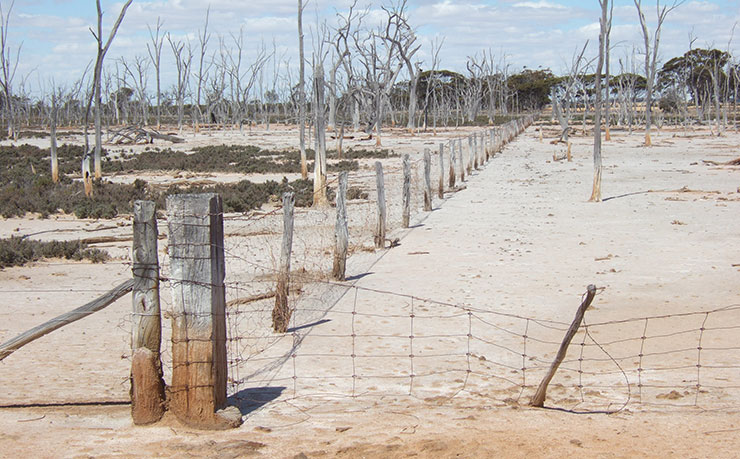
Now here’s a picture from the exclusion zone around the site of the biggest nuclear accident in history; the Chernobyl reactor explosion and fire in 1986. I’ve chosen a picture with nice horses, but the exclusion zone is a thriving wildlife refuge for many animals.

The Chernobyl exclusion area is 1/17 the size of the outer perimeter of the Barngarla native title area, but the accident didn’t even manage to destroy that tiny area, let alone an area the size of the Barngarla native title area. The land wasn’t destroyed and the animals don’t have two heads.
Check out this National Geographic story; there are beavers in the rivers, wolves in the forests and decades of desperate attempts to find catastrophic adverse impacts have failed.
How is that possible? Is it a cover up? Are all the Ukraine wildlife tours really just groups of paid nuclear industry lackies?
The truth is sometimes too simple and people strain to believe it after decades of anti-nuclear propaganda. Small changes in soil chemistry can cause havoc to land and ripple through an ecosystem. Not so radiation.
If you want to kill or damage DNA in the cells of plants or animals with radiation, you need gargantuan doses, typically delivered at rates hundreds of thousands of times higher than the natural background rate of radiation.
Radiotherapy units do this. Their goal is to hit tumour cells and kill them by overwhelming the cell’s natural rates of DNA repair. But the tumour cells recover, as do normal cells. So radiotherapists hit them again, and again and again; 20 to 30 times.
There was an area at Chernobyl hit by radiation doses high enough to kill plants; and even trees. It was bulldozed and buried. And when (most of) the people moved out, the animals returned and have flourished. Some people refused to leave and have been living at Chernobyl for decades.
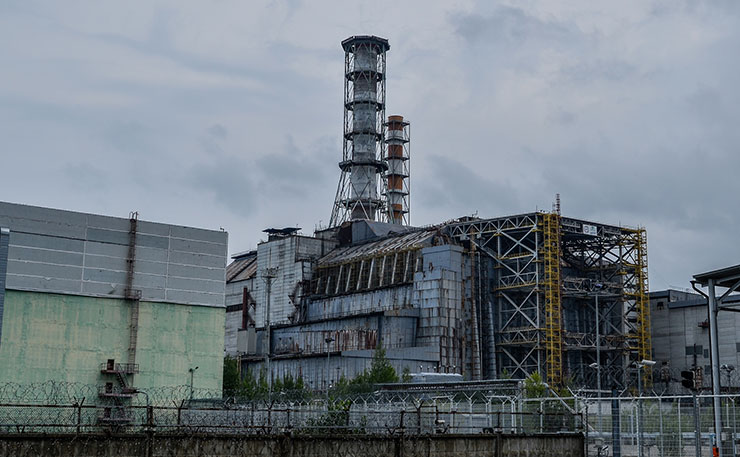
Comparing the contamination from Chernobyl to the waste facility/dump is like comparing a bank of blast furnaces to a birthday candle, but if Chernobyl didn’t destroy the surrounding region, then three olympic swimming pools worth of trivially radioactive mostly medical material certainly won’t do it, and that’s what is to be stored at the South Australian site.
If anybody told Ms Dare that the kinds of radioactive material being stored at this facility could “destroy our country”, they were either deliberately lying, or spectacularly ill-informed; or both. This is not a matter of opinion; any such claim is simply preposterous. To spread misinformation to instil this level of fear is unconscionable.
And the concerns about leaks? Leaking drums are always a worry, usually a chemical worry. Testing the radiation level of the leaks is the easy part, working out what kinds of chemicals and how to deal with them is considerably harder.
A few weeks after the Kimba hearing, the CSIRO investigation into the Woomera leaks reported its results. Principal Scientist Dr Dirk Mallants was quoted on ABC news, saying: “We used a number of different techniques to measure the radioactivity and the results show that there’s no contamination — the levels of radioactivity are those of the natural background.”
That doesn’t mean there isn’t a problem, it just means it’s not a radiation problem. Compared to chemical contamination, radiation is much simpler. You can, for example, handle uranium with your bare hands because almost all the radiation is alpha particles. They can’t get through your skin.
But like petrol, you’d be well advised not to swallow any. This is similar to many common risks. We carry cans of petrol around without too much concern, despite its deadly potential. It can incinerate you, it can explode if you are particularly skilled at atomising it and applying a flame. But we all know not to swallow the stuff; and sniffing it can have horrible consequences.
There are some radioactive sources that pose a risk. Not a risk as big as alcohol or driving on our highways, but one worth acting on; and they are acted on. Such sources, like other dangerous things, are packaged accordingly. Typically in sealed containers that are really tough to break open.
There might be some of these in the intermediate level waste stream that will be temporarily stored at the facility. Car batteries are typically sealed these days for the same reasons; because the acid can be seriously dangerous. So it is with some radiation sources.
There is nothing more dangerous about this facility than thousands of other facilities across the country that handle dangerous things like petrol, LNG, fertiliser, or any number of the thousands of other things that underpin the way we live. In fact, it’s the opposite.
Petrol stations are far more likely to leak fuel and contaminate water than this facility. There are thousands of sheep dips around Australia with toxic residues from decades of using some really nasty chemicals to kill microbes on sheep.
The irony about this particular storm in a tea cup is that the traditional Barngarla lands are an area rich in natural radioactivity.
Highly radioactive area, naturally
South Australia doesn’t have the world’s biggest (known) uranium deposit by accident, it’s because of our geology; it’s intrinsic to the land. The Barngarla native title land on Eyre Peninsula is littered with uranium deposits; tens of thousands of tonnes of uranium at densities that miners think worth mapping. That radioactive geology is billions of years old. It was there long before even the Barngarla.
Some distance north east of the Barngarla traditional lands are the Paralana radioactive hot springs. Radioactive hot springs like this are often popular tourist destinations, typically because they are developed into health spas; like those at Ramsar in Iran. Here you can read about the health properties of the hot springs at Afra in Jordan, and here you can check the radiation dose.
Paralana is also the name given to the now defunct geothermal power project in the same area. Remember that?
Nuclear power at Paralana
The project drilled deep holes tapping the heat beneath the earth’s crust. It turned out to be much harder to transform a clever idea to a working energy supply, but that’s common with clever ideas. Did anybody think about where that heat came from?
Everybody involved in the project knows exactly where the heat comes from, but not too many of the general public understand what generates geothermal heat; radioactivity.
Geothermal heat is from radioactive decay deep within the earth.
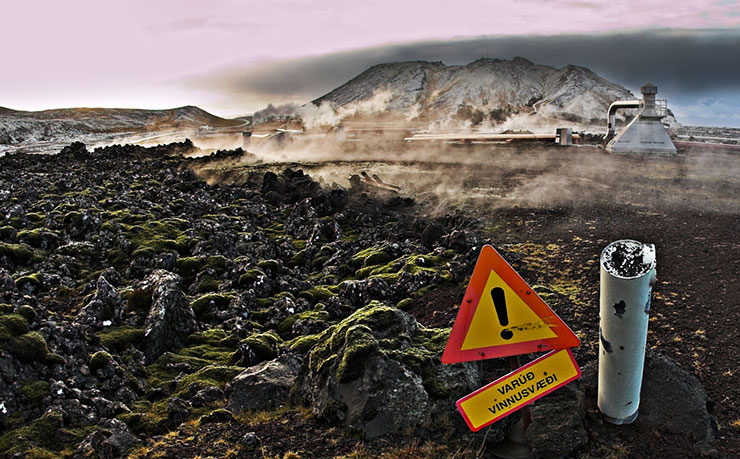
Geothermal power is nuclear power. It isn’t fission, the splitting that occurs in a reactor, it’s the slow and natural transformation of atoms by processes called radioactive decay.
Geothermal power is driven by raw radioactive decay heat at its simplest. So it isn’t just the top layers of the land that are radioactive, the phenomenon runs very deep under Barngarla land; and everywhere else for that matter.
Reactors on Barngarla native title land?
While there are many areas rich in uranium on Barngarla native title land, there are, as far as I know, no natural reactors. But maybe that’s just because nobody has looked hard enough.
There are areas on the planet where natural conditions in the past were perfect for causing uranium to fission (split); exactly as in a modern nuclear reactor. The fission process wasn’t invented, it was discovered. It is entirely natural.
At Oklo, a place in Gabon in Africa, fission took place naturally almost 2 billion years ago and ran for hundreds of thousands of years. It produced, of course, the same kinds of high-level radioactive waste as a modern research or power reactor.
Dig as many holes on the planet as you like, you’ll never find a naturally occurring mobile phone at the bottom of any of them. But the conditions created in a nuclear reactor to fission (split) uranium can occur naturally and have done so; because it’s a natural process.
The first human-made reactor, built a couple of billion years after the Oklo natural fission processes, was a simple affair built in a squash court. It was simple because, stripped back to its core operating components, a nuclear reactor is incredibly simple.
How it works
Here’s some background. Uranium comes in a few forms (isotopes), and in a reactor, the level of the critical form (Uranium 135) is, today, produced by a separate enrichment process. But a couple of billion years ago, this isotope was far more common.
So the natural uranium of that era was already enriched enough to fission of its own accord, given the right conditions. And those conditions to naturally produce fission could and did occur… at Oklo.
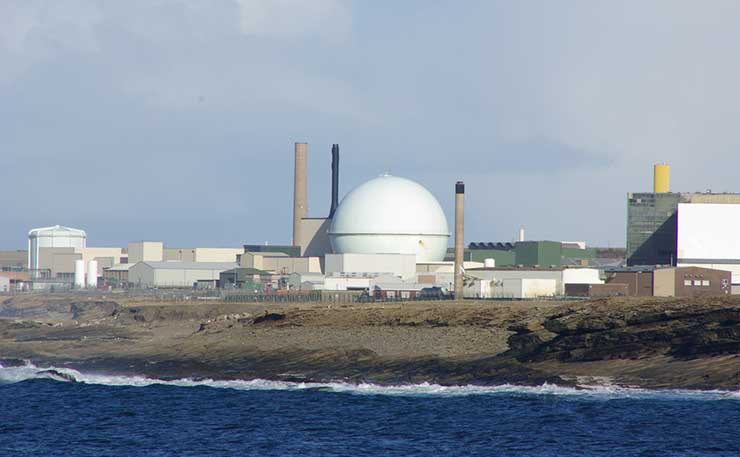
The high-level waste that resulted from that fission stayed exactly where it was generated and, in effect, was part of the fingerprint demonstrating that fission had occurred. The fact that that waste did nothing harmful for a couple of billion years is one tiny part of a large body of evidence that high-level waste repositories will work… because they already have; we just didn’t build them, we found them.
It’s a fact of science that Mother Nature built the first nuclear reactors and created the first high-level radioactive waste repository.
Back to waste
Now let’s get back to issues? How much waste are we talking about? The facility is being designed for storing three Olympic swimming pools worth of material.
Two pool’s worth will be low level waste (LLW) and stay permanently at the facility; and the other will be intermediate level waste (ILW) which will only be at the facility on a temporary basis.
One of the two LLW pools is waste generated during the past 50 years and the other is for waste that doesn’t even exist yet. It’s for waste expected to be generated over the next 100 years. Almost all of the future material will be as a result of nuclear medicine and a considerable amount of the old stuff is also medically related; it comes from ANSTO’s role generating radioactive isotopes, which are used for many scientific processes, in addition to nuclear medicine.
Remember what we are talking about here. Radiation isn’t contagious; and this stuff isn’t even radioactive enough to generate heat. Ninety-two percent of the ANSTO waste is low-level waste, made up of “paper, plastic, gloves, cloths and filters which contain small amounts of radioactivity”.
We aren’t talking about something really dangerous like, for example, a piggery. Piggeries all over the world are implicated in not just potential groundwater contamination, but actual contamination. Apart from contaminating water, piggeries are also implicated in the development of anti-biotic resistant bacteria.
While people bang on about ‘radiation risks’, there is rarely a body count. Not so the risks associated with piggeries. The death and diseases driven by piggery production have an actual body count; thousands of cases of bowel cancer in Australia annually for starters (not all down to pigs, but from red and processed meat generally).
Not that long ago, back in the late 1990s, piggeries in the US spawned a virus which eventually mixed with other viruses from both pigs and chickens in Mexico, spawning a disease which killed some 284,000 people in the 12 months after its release; swine flu… technically known as H1N1pdm09.
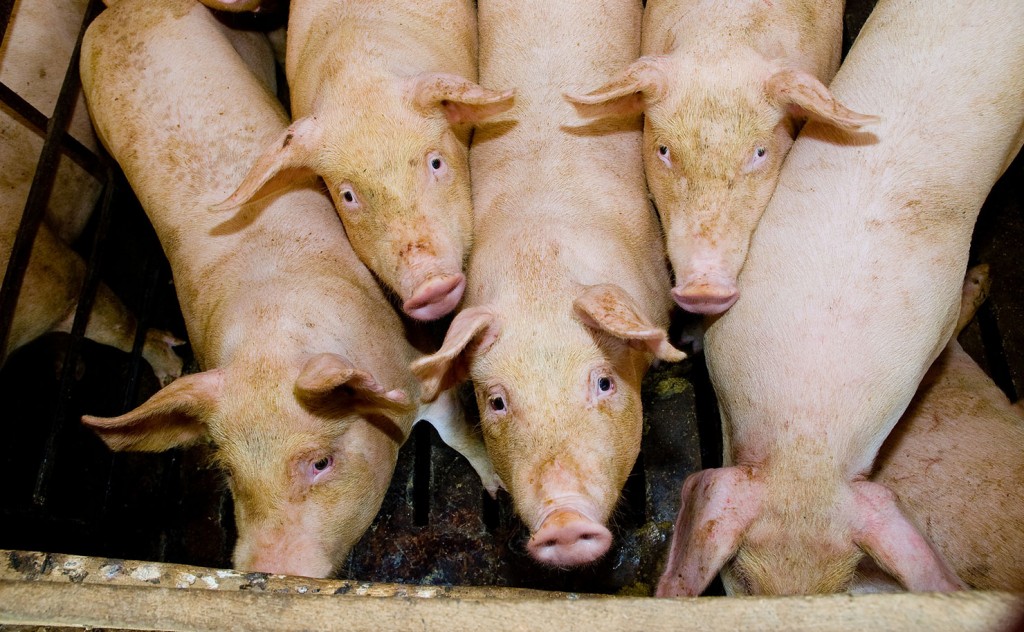
Swine flu is still killing people today. About 16 percent of the intensive care unit admissions for flu in 2017 were for H1N1pdm09. These are rare, random biological events, but absolutely catastrophic.
Does the anti-nuclear movement have any kind of annual death toll associated with radioactive waste? No, because deaths are so rare. Of all the things in this world you could choose to worry about, radioactive material waste dumps deserve to be at the bottom of any rational list.
Nothing contagious comes from radioactive waste of any kind. Handle it carelessly and it might raise your risk of cancer, like smoking some cigarettes. Smoke of any kind is unhealthy … expect to see a spike in deaths because of the summer bushfires this year. I’m sure the medical statisticians are crunching those numbers as I write.
Democracy and misinformation
Who told the Barngarla that this radioactive waste facility could destroy their land? If anybody told them this, then they need to be held to account. They either lied, were negligent or chose to withhold the truth.
But maybe nobody directly told this to the Barngarla; perhaps the Barngarla, like many other people simply made a presumption based on anti-nuclear websites.
I referred earlier to the arid factual desert of nuclear debates. As an example, there have been many stories about the radioactive water held at Fukushima. Typical stories have no quantitative information to enable people to compare the risks posed by this water to other risks they understand.
In my submission to the SA Royal Commission on the Nuclear Fuel Cycle, I calculated how much of this water you’d need to drink to get the kind of radiation dose given to rats to increase their cancer risk; 112 litres. And how often did the rats receive such a dose? Every day.
Talk of risks without quantifying and comparing them with something people actually understand is either lazy, dishonest, or both.
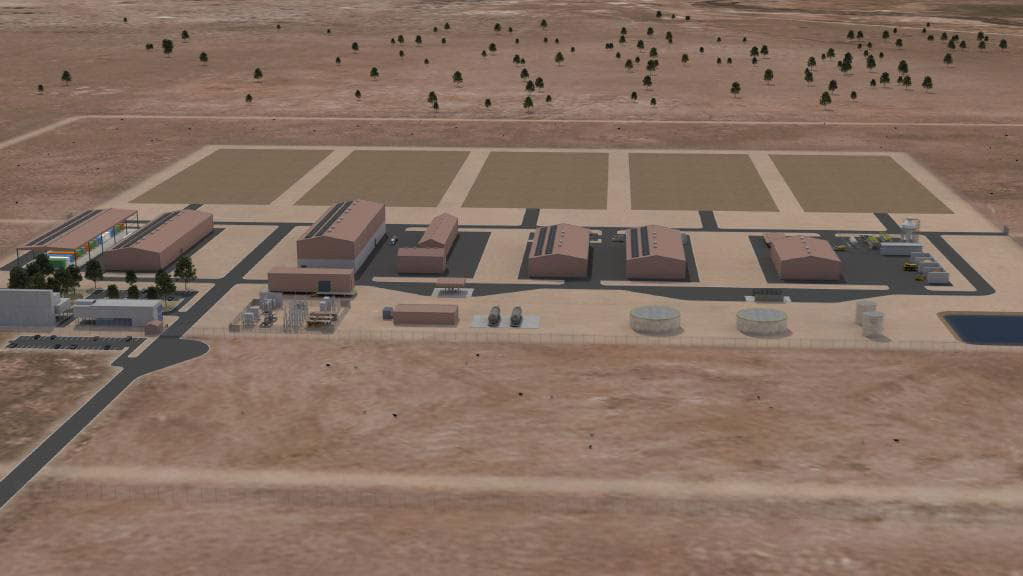
Had the Barngarla been properly and responsibly informed about the true nature of the radiation issues, events could have flowed very differently. There could have been meaningful negotiations regarding any culturally significant places within the area chosen for the facility. Placing such a tiny facility in such a large area would have been simple given a proper understanding of the very restricted nature of the impact.
But instead of cooperation, there was a legal stoush with claim and counter claim about whether this or that place had been registered. And instead of cooperation we have the Barngarla travelling to Canberra in protest.
The goal will be to get the Senate to block the process. There will, I’m sure, be the usual fact-free, process laden debate; nobody will try to explain or compare millions of hectares of salt damage in Australia to the thriving wildlife around Chernobyl.
Thirty years of misinformation from the anti-nuclear movement has created a quagmire of distrust and division and fomented worry where none is justified.
But it isn’t too late; it’s never too late for good evidence to banish unnecessary stress and fear.
BE PART OF THE SOLUTION: WE NEED YOUR HELP TO KEEP NEW MATILDA ALIVE. Click here to chip in through Paypal.
Donate To New Matilda
New Matilda is a small, independent media outlet. We survive through reader contributions, and never losing a lawsuit. If you got something from this article, giving something back helps us to continue speaking truth to power. Every little bit counts.

